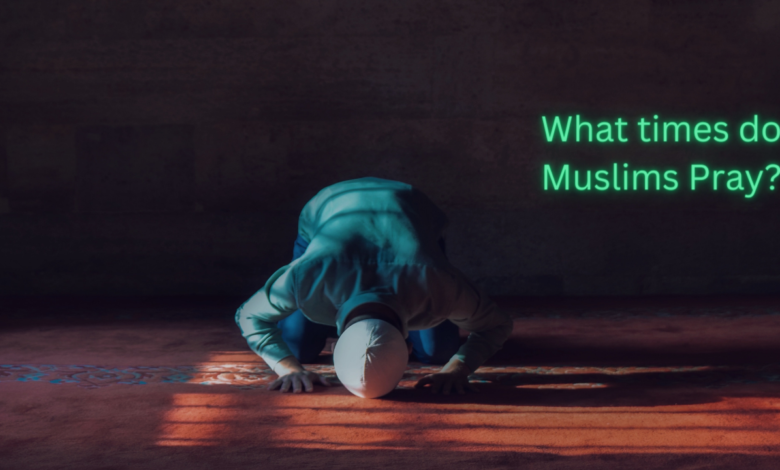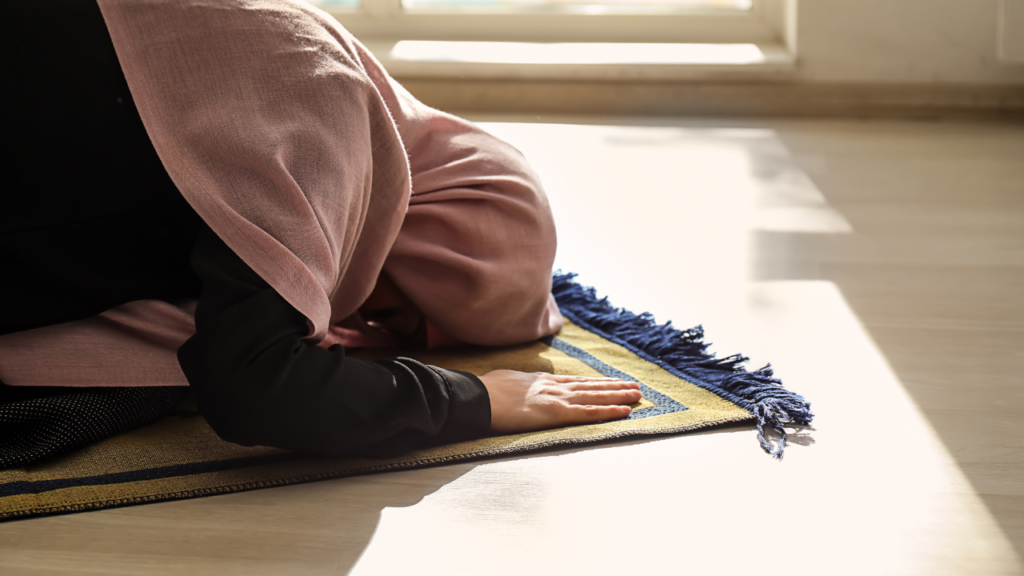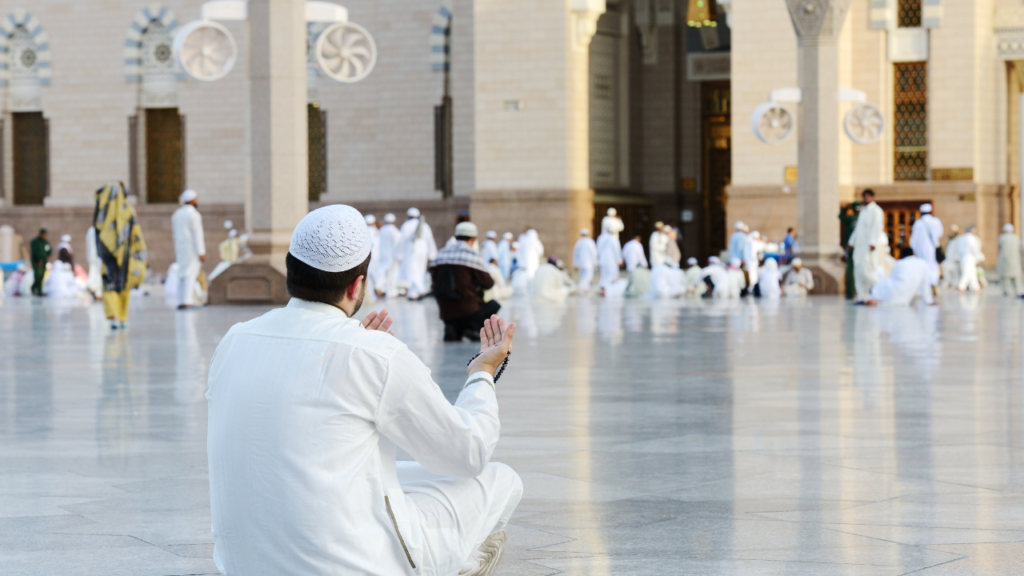What times do Muslims Pray?
"The Five Daily Islamic Prayers: Moments of Spiritual Connection"

What times do Muslims Pray?
Muslims are required to pray five times a day. These prayers are known as Fajr, Dhuhr, Asr, Maghrib, and Isha. The specific times for each prayer can vary depending on the geographical location and time of year.

Introduction
Prayer is a fundamental aspect of Islamic faith and practice, with Muslims offering five daily prayers as a means of connecting with God and seeking His guidance and blessings. These daily prayers, known as Salat, have specific times and are a central pillar of Muslim life. In this article, we will explore the times at which Muslims pray and the significance of each prayer in their daily routine.
The Five Daily Prayers
Fajr (Dawn Prayer):
- Fajr is the first of the five daily prayers and is performed before sunrise.
- It begins at the break of dawn when there is a faint light on the horizon but before the sun has risen.
- This prayer consists of two Rak’ahs (units of prayer).
- Fajr is a time for reflection and seeking God’s guidance for the day ahead.
Dhuhr (Noon Prayer):
- Dhuhr prayer is offered when the sun has passed its zenith and starts to decline.
- It is performed in the early afternoon, around midday.
- Dhuhr comprises four Rak’ahs and is a reminder for Muslims to pause amidst their daily activities and reconnect with God.
Asr (Afternoon Prayer):
- Asr prayer is observed in the late afternoon, typically when the sun is still bright but has started to lose some of its intensity.
- There are two Rak’ahs for the Asr prayer.
- This prayer is a moment of supplication, seeking God’s assistance and strength to persevere through the rest of the day.
Maghrib (Evening Prayer):
- Maghrib prayer is offered just after sunset when the red twilight glow in the sky is visible.
- It consists of three Rak’ahs.
- Maghrib is a time for Muslims to express gratitude for the day’s blessings and seek forgiveness for any shortcomings.
Isha (Night Prayer):
- Isha is the final prayer of the day and is performed after twilight has disappeared.
- It includes four Rak’ahs.
- Isha serves as an opportunity to seek God’s guidance, reflect on one’s day, and seek forgiveness for any mistakes made.
Significance of the Prayer Times
- Spiritual Discipline: The prescribed prayer times help Muslims maintain spiritual discipline and mindfulness throughout the day. They serve as regular reminders to turn to God, regardless of life’s busyness.
- Connection with the Divine: Each prayer time provides an opportunity for Muslims to connect with God, seeking His guidance, forgiveness, and blessings.
- Gratitude and Reflection: The different prayer times encourage Muslims to pause and reflect on their actions and intentions, fostering gratitude for God’s blessings and seeking His guidance in daily affairs.
- Community and Unity: The congregational prayers, particularly Friday’s Jumu’ah prayer, strengthen the sense of community and unity among Muslims as they gather to worship together.
- Spiritual Growth: By offering these prayers at specific times, Muslims develop a strong sense of spiritual growth and discipline, leading to a deeper understanding of their faith.
Also check
- How to become a Islamic Scholar?
- Can Muslims eat beef?
- What is the purpose of life in Islam?
- Why do Muslims Fast during Ramadan?
- Family Values in Islam
- How do you repent in Islam?
Conclusion
The five daily prayers in Islam are not just rituals but a means of maintaining a strong connection with God and fostering personal growth. The specific prayer times punctuate the day, reminding Muslims of their purpose and responsibilities as followers of Islam. These prayers not only provide spiritual nourishment but also encourage mindfulness, gratitude, and a sense of community among believers. In the hustle and bustle of life, the times of prayer serve as a reminder to pause, reflect, and seek God’s guidance and blessings.

Frequently Asked Questions (FAQs) About Muslim Prayer Times
What are the daily times for Muslim prayers?
Muslims are required to pray five times a day. These prayers are known as Fajr, Dhuhr, Asr, Maghrib, and Isha. The specific times for each prayer can vary depending on the geographical location and time of year.
How do Muslims determine prayer times?
Muslims determine prayer times based on the position of the sun in the sky. There are prayer time calculators, mobile apps, and Islamic websites that provide accurate prayer times for specific locations.
What is the first prayer of the day for Muslims?
The first prayer of the day for Muslims is called Fajr. It is performed before sunrise and marks the beginning of the day’s prayers.
When is Dhuhr prayer performed?
Dhuhr prayer is offered in the early afternoon, shortly after the sun has passed its zenith, and its shadow starts to lengthen.
What is the time for Asr prayer?
Asr prayer is performed in the late afternoon, typically when the shadow of an object is equal to its actual length. However, there are different schools of thought on the exact timing.
When do Muslims pray Maghrib?
Maghrib prayer is offered just after sunset, right after the sun has disappeared below the horizon.
What is the time for Isha prayer?
Isha prayer is conducted after twilight has faded and the sky is fully dark, usually between sunset and midnight.
Do the prayer times change throughout the year?
Yes, the prayer times change throughout the year due to variations in the length of daylight and night. They also depend on the geographical location, so Muslims in different parts of the world may experience different prayer times.
Are there any exceptions or allowances for missed prayers?
In Islam, there are provisions for making up missed prayers. However, it’s essential to pray within the allotted time frame for each prayer whenever possible. If a prayer is missed, it should be made up as soon as possible.
Can Muslims pray at any time during the prayer window?
While there is a designated time frame for each prayer, Muslims are encouraged to perform their prayers as early as possible within that window. However, praying at any time within the designated period is valid.






